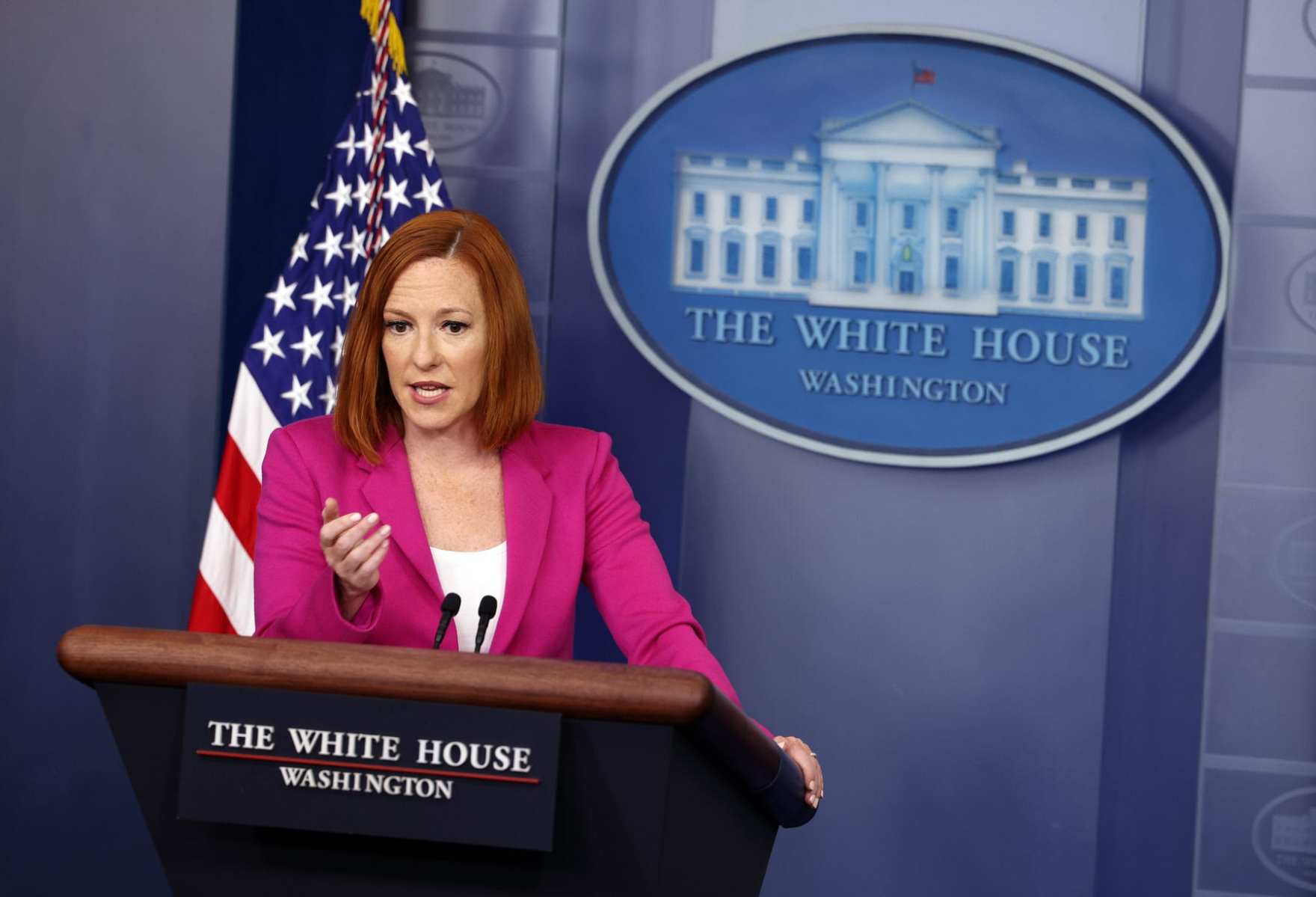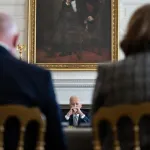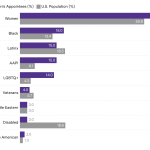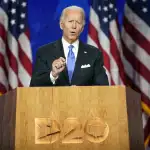President Joe Biden’s White House has the narrowest gender pay gap of any administration since 1995, according to new salary data released Thursday.
The data, which the White House has been required to release publicly since 1995, shows that women in the Biden administration earn 99 cents for every $1 earned by men. That is far narrower than the gender wage gap in the country as whole — in 2021, women are earning 82 cents on the White man’s $1.
On average, women earn $93,752 in Biden’s White House, while men earn $94,639.
In the 2020 Trump White House, women earned 69 cents on men’s $1. In Trump’s first year in office, 2016, women earned just 63 cents to men’s $1.
Biden’s gap is also narrower than other Democratic presidents. In the Obama White House, women earned between about 84 and 89 cents on the dollar, according to an analysis by the American Enterprise Institute, a conservative think tank.
The difference in the current administration is the split between men and women in terms of staff. About 60 percent of the staff is women, the White House said in a statement. (It has not responded to questions about whether any of its staff are nonbinary.)
The gender wage gap is typically a “raw” figure that doesn’t adjust for experience, education, title or other factors. It simply looks at median wages. In past administrations, a lack of women in higher-paid positions widened the gap.
But in the Biden administration, there is a wider distribution of women across the pay scale, not just in the lowest paid jobs where they have typically been concentrated. About 56 percent of the senior staff in Biden’s White House are women, and about 36 percent come from racially and ethnically diverse communities.
For example, the two highest paid people in the Biden White House are women: Immigration policy adviser Molly Groom earns $185,656, and senior policy adviser for broadband Elizabeth Hone earns $183,164. The two lowest-paid are men, who both earn $36,000.
Biden has said repeatedly that he is focused on creating a more inclusive administration “that looks like America.”
To that end, the White House staff now includes the first-ever chief diversity and inclusion director, Michael Leach. Last week, the president signed an executive order reestablishing a government-wide diversity and inclusion initiative that requires federal agencies to assess barriers to diversity in their workforces and establishes chief diversity officers across the administration.
Outside of the White House, the administration has appointed 16 high-level leaders who are the first in their communities to hold those positions, including first woman Vice President Kamala Harris, first woman Treasury Secretary Janet Yellen and Deb Haaland, the first Native American to serve as a Cabinet secretary.
However, the administration hasn’t hit every mark. For the first time in two decades, there are no Asian Americans or Pacific Islanders serving as Cabinet secretaries.
Kelly Dittmar, the director of research and scholar at the Center for American Women and Politics said the figures on gender are a recognition of the commitment the administration made — and its intent to keep it, knowing the nation would closely be watching. The White House released the gender breakdowns in addition to the required salary data, which doesn’t require gender to be noted.
“They have to be able to show this in order to push back against claims that they’re not walking the walk after they make the commitment, and that has been a problem of many administrations — Democrat and Republican — before them, who have said, ‘Yes, we support equity. Yes, we support inclusion.’ And then when the numbers come out, you don’t actually see it,” Dittmar said.
It’s also true that there were likely more high-level Demoratic women for Biden to hire who were more enthusiastic about joining the administration. In the Trump administration, there was no shortage of qualified Republican women, Dittmar said, but there were women who were harsh critics of Trump, like MSNBC host Nicolle Wallace, who previously worked in the George W. Bush White House and John McCain campaign.
“The friendliness of Trump himself and the Trump administration toward women and toward equity issues — if that was a concern for women seeking a position — fear of being associated with that, and just worrying themselves about their own positionality,” Dittmar said was likely contributing to some high-level Republican women choosing to stay out of the administration.
That also means many of the women the Trump White House recruited were younger. While there were some women in high-level positions, like former adviser Kellyanne Conway, aide Hope Hicks and press secretary Kayleigh McEnany, more were concentrated in lower paid positions. A 19th analysis of the 2020 White House data found that the gender split among the highest earners in the Trump White House was 37 percent women and 63 percent men.
For Biden, who said he supports raising the federal minimum wage, raising wages for care workers and the Paycheck Fairness Act, all moves that could improve gender parity, the numbers in his own White House could prove helpful to making that case, Dittmar said.
“The administration has been making a case for policy around gender equity,” she said. “It is easier to do that from a place of expertise and accountability — we’ve done it so you can do it, too.”





